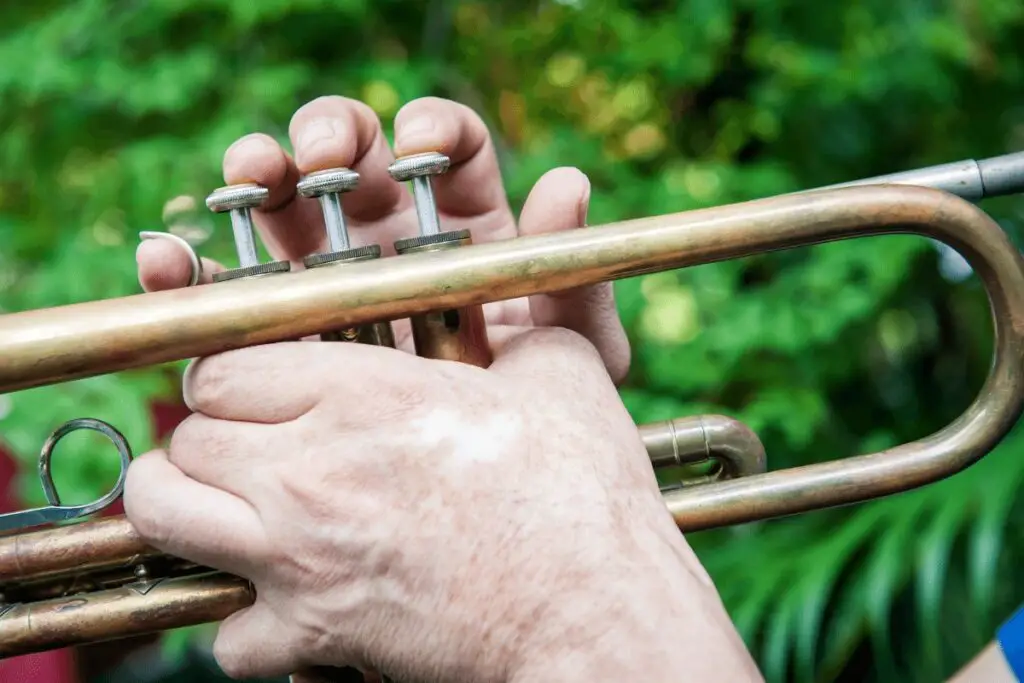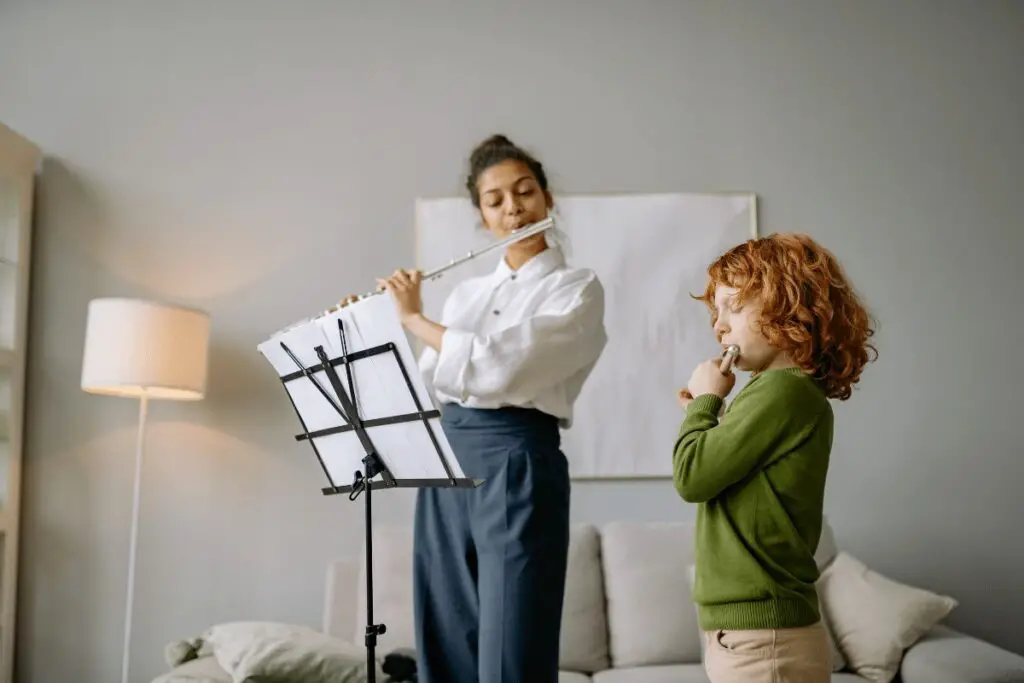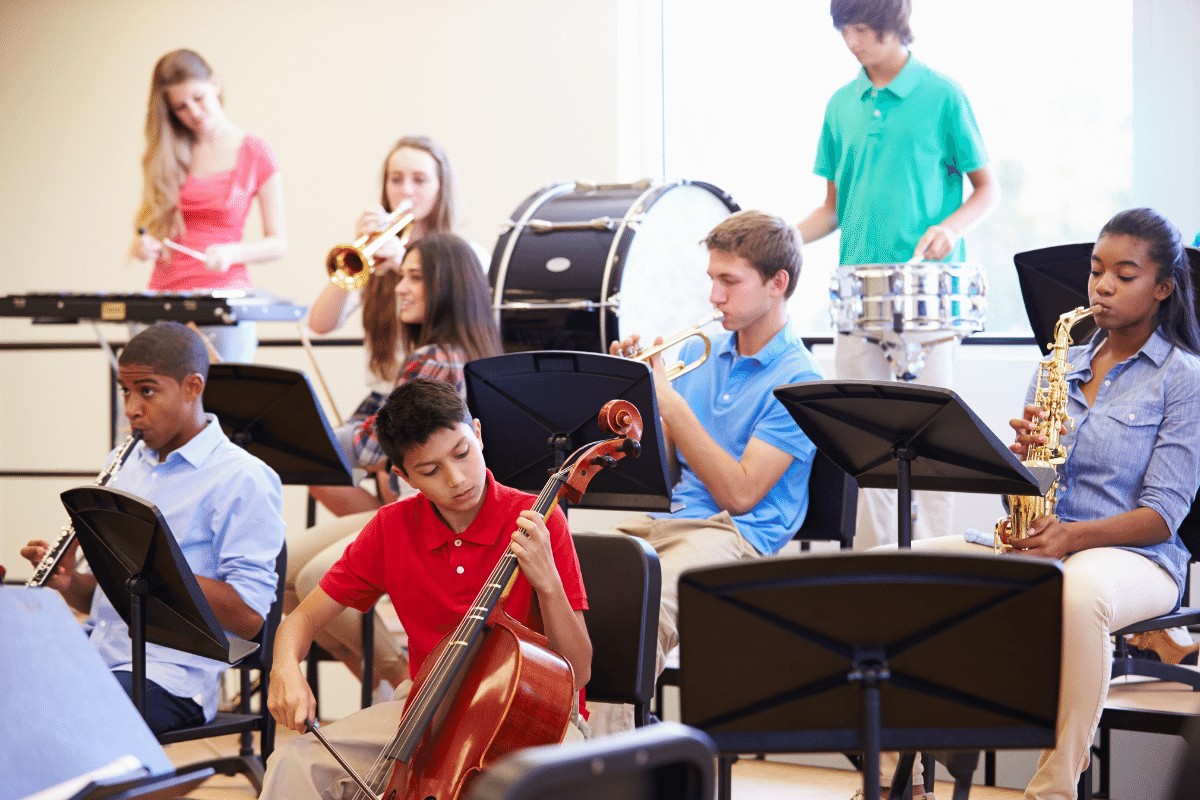Whether you’re a new band director or experienced, it’s always exciting (and tough) to help your beginning players get a handle on the first five band notes.
As a music teacher, spouse to a killer band teacher, and friend to many band directors, I know how important it is to help students get through these notes feeling good about themselves.
With this in mind, I decided to share these 6 ways to help new players get the first five band notes under their fingers and have a good time while doing it.
Table of Contents
Follow A Clear Chart
When it to the first few notes, expect your students to be super confused.
Not only are they expected to pick up and make noises on their instruments, but they also need to play certain notes.
It’s a tough thing to do, but a band note chart covering the first five notes is exactly how to finger each of those notes by a specific instrument.
It’s important to offer this chart or download it as something extra to the method book.
This way, they have something to look at and reference while they’re looking at the book.
You obviously don’t want them using this forever, but in the beginning, it’s a good way to help them while they’re playing.
Plus, they won’t have to flip back and forth through the book over and over again.
I’ve seen a few across the old interwebs, but this one posted on Fenton Bands Page is great.
All credit goes to them!
Instruments included in this download are as follows, and the chart shows notes on the staff as it would be seen and a fingering diagram for the first five notes (Bb, C, D, Eb, F):
- Flute
- Oboe
- Clarinet
- Alto Saxophone (And by extension, tenor saxophone)
- Bassoon
- Trumpet
- French horn
- Trombone
- Baritone/Euphonium
- Tuba
- Mallet Percussion
Long Tones Are Where It’s At

Any wind player knows how important long tones are, especially in the beginning of learning to play.
Long tones are great for warmups, sure, but they also build breath control and help instrumentalists focus on tone.
It’s great to practice how crescendos and decrescendos feel and helps you center your tone.
But on top of all this, lone tones give students the time to process fingering for when the switch comes.
One quick exercise perfect for new players is to play each note for 8 beats.
For the first 4 beats, have them crescendo and then decrescendo on the last 4 beats.
Start on the concert Bb and work your way up and down the five notes.
Give them a measure of rest between each note to let them catch their breaths and prepare their lips.
Warning: Don’t be surprised if your low brass players struggle to hold the notes for the entire length.
It takes a lot of air to play those. As a tuba player, I think it’s more important for young, low brass players to focus on filling up their horns before matching your exact breath phrases.
Sing And Play And “Singer”
Intentional and thoughtful repetition is the key to technical mastery.
For instruments and bands on the first five notes, we want to make sure we offer repetition in different ways without blowing their chops (making their lips tired).
For another way to reinforce the fingering and develop their ears, we can add singing to our regular routine.
Singing is the most efficient way to develop your ear training. It doesn’t have to have a great tone, but singing on pitch makes you a better player.
This is why all college music programs include some version of several sight singing and ear training classes for all of their students.
Why should we forget this in band rooms?
Here are a few ways to consider integrating singing in your rehearsal to help learn the band notes:
- Alternate play the note for 4 beats and sing the note for 4 beats.
- Have half the group sing and half the group play. Then switch.
- Use solfege to reinforce pitch relationships.
- “Singer” difficult passages or exercises before playing them. (Singer means to sing and finger your instrument on the right notes.)
- Alternate singing and playing for each note with the previous exercise. Do it a second time but switch which one you start on.
Use Folk Songs
As an elementary music person first myself, I wish more band directors took advantage of this next tip.
Odds are, your elementary music teachers (if you’re lucky enough to have one) used a lot of folk songs in their music classes.
A lot of those folk songs are in pentatonic or use the first five notes of the major scale.
Why not utilize what they already know and build on that with their instruments?
You’d be surprised how quickly they pick up on playing those old songs; it really helps them get out of their heads on the “notes” and into playing the “songs.”
Call And Response

Learning by rote and echoing shouldn’t be used all the time, but it has its place in developing the ear and building facility with their fingers.
Call and response has been a staple of any musical training, and it’s sad to see it fall out of favor in many band programs.
But I know a lot of the killer band programs around me use it as a tool for helping their students make the most of the instrument and building independent musicianships.
Here are some ways to help your students with call and response:
- You play patterns, and the band echoes
- You sing patterns, and the band echoes (playing)
- One student plays a pattern, and the band echoes
- You play different patterns, and the band plays one recurring answer
- You play a pattern, and each student echoes
- Students echo a different pattern when you play the same “call”
Method Books
It’s kind of a cop-out, but method books were made for a reason.
A sequential book for learning notes made by experts is a great way to build knowledge on all of these different instruments.
My favorite method book series is the Essential Elements one.
It’s a classic and organized with quality exercises used by millions of band students.
Odds are, you already have this, and if you don’t, you should give it a try.
Need some inspiration? Check out these music education quotes to get you by.


